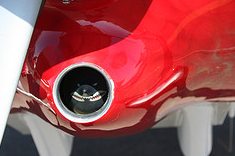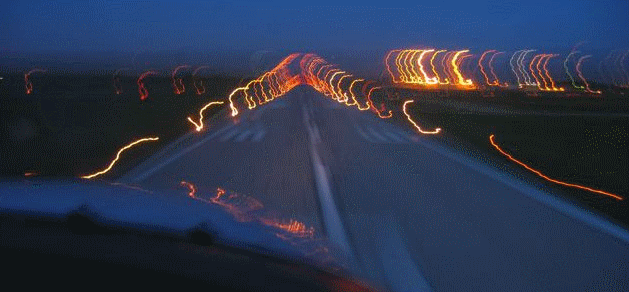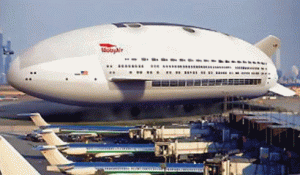It has been said that each pilot is given a full bag of luck and an empty bag of experience. The key is to not run out of luck until the bag of experience is filled. Years ago, on the week after my first solo, I would be grabbing a handful of luck and making a deposit. That day the sky was haze gray, better suited to the side of a battleship than to the heavy curtain of clouds overhead. Given my hefty student pilot experience of 25 hours, I confidently walked to the line boy and asked about flying in weather that may turn to light rain. “Heck” he said” These planes can fly in a downpour”. There: It was now “good to go”. In retrospect it may have been unwise to ask for expert aviation advice from a guy whose experience was limited to adding fuel and oil to the four seaters on the ramp.
The desire to fly was too great. I rumbled down the runway with six miles visibility thinking what can go wrong on a short 30 mile hop? After 10 minutes and 3.000, ft the visibility became more ragged and I noticed light beads of rain on the windshield. Still I pressed on, flying over cornfields that all began to look the same. Mind you, my bag of experience was still empty. No way did I realize that visibility could decrease with precipitation. Could it get worse? It could. This would be an ideal time to have an instructor in the right seat but I realized that he would have told me that only an instrument rated pilot or a dimwit would fly in this stuff. Lacking the instrument rating, I quickly calculated into which category I fell. In fact, I didn’t even have a private pilot license. This would be a good time to point the plane back toward the aerodrome in the most likely direction. Unfortunately, the plane had no GPS. The Navigation radios looked helpful if only I knew how to use them which, no, I didn’t. I was relegated to “
dead reckoning” (A name which didn’t sit well with me at this point) and pilotage, which is –looking out the window for landmarks.
I’m here to tell you that corn and soybeans make very poor landmarks. Mostly because they are all green. The small section of visible ground below was like watching a green patchwork quilt glide by while looking through a telescope. Looking forward was mostly a white soupy mess. I guessed where I was at in a broad sense but could not be more specific than meandering someplace in Northern Illinois. And that’s the thing. One shouldn’t meander aimlessly in a situation where you are traveling at speeds and altitudes that are at once both lethal. Until this point I hadn’t really thought about the fact you could get killed doing what has appropriately been named scud running.
I needed to land. This being a towered airport and all, one needs to ask permission prior to entering the area. With my confidence diminishing as fast as the visibility, I chose to guess my location in less than MVFR conditions and make contact with those that control the airspace. I bluffed: “Tower, November eight two eight six niner is ten miles southwest, requesting to land with
information Delta” (Confirming that current airport conditions were lousy. I didn’t need the ATIS for this). The control tower responded with “make right base for runway 10”. With that chore out of the way, I begin hunting for anything familiar. I plaintively stared at my chart on the kneeboard hoping it would magically give me a clue. Nothing at all looked familiar.
I reduced my altitude, which at some point is a bad idea if you nick radio towers. Needles poking randomly into the sky, daring me the dimwit pilot, to skewer the bird into a kabob. I was lost and I knew it. Dropping as low to the ground as I dared I began to see:
A water tower! Banking closer I read the name. It was…. a town that wasn’t supposed to be there. This was unexpected. Suddenly, the firm voice of the guardian angel of the control tower called and said flatly “ 869er say intentions”, since I had totally blown past the class D airspace I said simply: “I really really would like to land. (I also had to request special VFR).
After giving me a heading I was on my way. I felt good. No, I felt relieved. The approach lights were as beautiful as any Christmas tree I had ever seen. I learned about flying from that. Mother Nature doesn’t play.
 His RV-6 intake has something extra inside. Next best thing to a Flying Tiger . “It’s actually an air diverter and I got some decals and did it up.” said Brownd.
His RV-6 intake has something extra inside. Next best thing to a Flying Tiger . “It’s actually an air diverter and I got some decals and did it up.” said Brownd.
 During my visit with Al Kelch he allowed me to step into his time machine. The door to his gigantic old barn, creaked open and the first step forward transported me backward to the roaring 20’s of aviation. I saw parts of planes, old radial engines, and there under the lights: a beautifully restored Stearman Bi-Plane and a high winged Welsh OW8M. There was a J-3 Cub, the aerobatic Decathlon and his most recent project, a Travel Air formerly
During my visit with Al Kelch he allowed me to step into his time machine. The door to his gigantic old barn, creaked open and the first step forward transported me backward to the roaring 20’s of aviation. I saw parts of planes, old radial engines, and there under the lights: a beautifully restored Stearman Bi-Plane and a high winged Welsh OW8M. There was a J-3 Cub, the aerobatic Decathlon and his most recent project, a Travel Air formerly 









 It’s always best to learn from someone else’s flying mistakes You’ll never live long if you intend to make them all yourself. On this particular day, as a budding student pilot, I chose to make one of my own. A few weeks earlier, I had just learned the subtle but necessary control inputs to maintain alignment with the runway upon landing in a crosswind. Today, I had taken off with steady 20 knot winds down the center. Actually, landing is pretty cool in this situation. The plane darn near seems to hover when attempting a short field landing with full flaps. This changes dramatically when the wind is coming at right angles to the plane
It’s always best to learn from someone else’s flying mistakes You’ll never live long if you intend to make them all yourself. On this particular day, as a budding student pilot, I chose to make one of my own. A few weeks earlier, I had just learned the subtle but necessary control inputs to maintain alignment with the runway upon landing in a crosswind. Today, I had taken off with steady 20 knot winds down the center. Actually, landing is pretty cool in this situation. The plane darn near seems to hover when attempting a short field landing with full flaps. This changes dramatically when the wind is coming at right angles to the plane 


